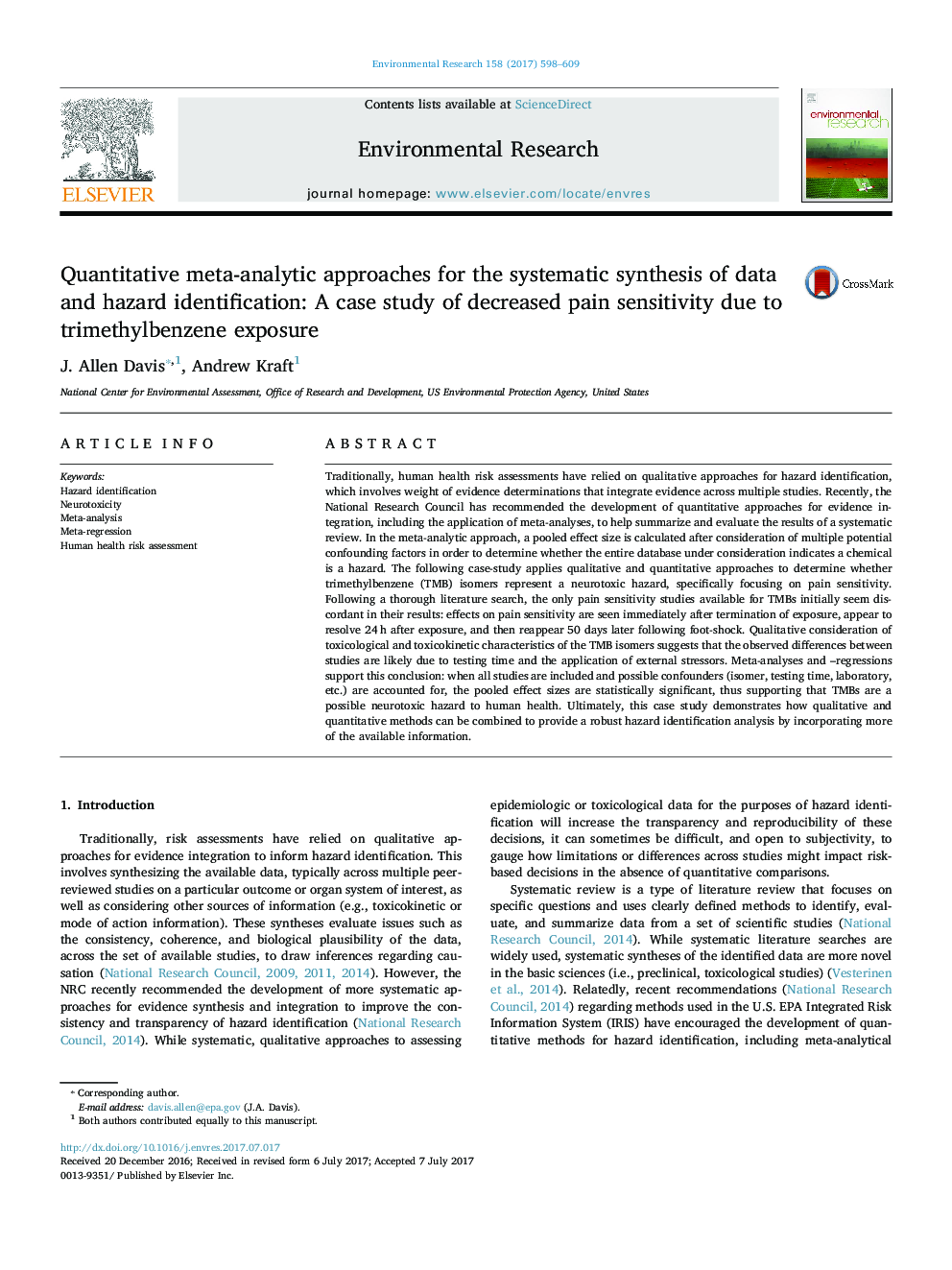| کد مقاله | کد نشریه | سال انتشار | مقاله انگلیسی | نسخه تمام متن |
|---|---|---|---|---|
| 5756359 | 1622545 | 2017 | 12 صفحه PDF | دانلود رایگان |
عنوان انگلیسی مقاله ISI
Quantitative meta-analytic approaches for the systematic synthesis of data and hazard identification: A case study of decreased pain sensitivity due to trimethylbenzene exposure
ترجمه فارسی عنوان
روشهای کمی تحلیلی برای سنتز سیستماتیک داده ها و شناسایی خطر: مطالعه موردی کاهش حساسیت درد به علت قرار گرفتن در معرض تری متیل بنزن
دانلود مقاله + سفارش ترجمه
دانلود مقاله ISI انگلیسی
رایگان برای ایرانیان
کلمات کلیدی
شناسایی خطر، عصبی عصبی، متاآنالیز، ماتریس رگرسیون، ارزیابی ریسک سلامت انسان،
موضوعات مرتبط
علوم زیستی و بیوفناوری
علوم محیط زیست
بهداشت، سم شناسی و جهش زایی
چکیده انگلیسی
Traditionally, human health risk assessments have relied on qualitative approaches for hazard identification, which involves weight of evidence determinations that integrate evidence across multiple studies. Recently, the National Research Council has recommended the development of quantitative approaches for evidence integration, including the application of meta-analyses, to help summarize and evaluate the results of a systematic review. In the meta-analytic approach, a pooled effect size is calculated after consideration of multiple potential confounding factors in order to determine whether the entire database under consideration indicates a chemical is a hazard. The following case-study applies qualitative and quantitative approaches to determine whether trimethylbenzene (TMB) isomers represent a neurotoxic hazard, specifically focusing on pain sensitivity. Following a thorough literature search, the only pain sensitivity studies available for TMBs initially seem discordant in their results: effects on pain sensitivity are seen immediately after termination of exposure, appear to resolve 24Â h after exposure, and then reappear 50 days later following foot-shock. Qualitative consideration of toxicological and toxicokinetic characteristics of the TMB isomers suggests that the observed differences between studies are likely due to testing time and the application of external stressors. Meta-analyses and -regressions support this conclusion: when all studies are included and possible confounders (isomer, testing time, laboratory, etc.) are accounted for, the pooled effect sizes are statistically significant, thus supporting that TMBs are a possible neurotoxic hazard to human health. Ultimately, this case study demonstrates how qualitative and quantitative methods can be combined to provide a robust hazard identification analysis by incorporating more of the available information.
ناشر
Database: Elsevier - ScienceDirect (ساینس دایرکت)
Journal: Environmental Research - Volume 158, October 2017, Pages 598-609
Journal: Environmental Research - Volume 158, October 2017, Pages 598-609
نویسندگان
J. Allen Davis, Andrew Kraft,
